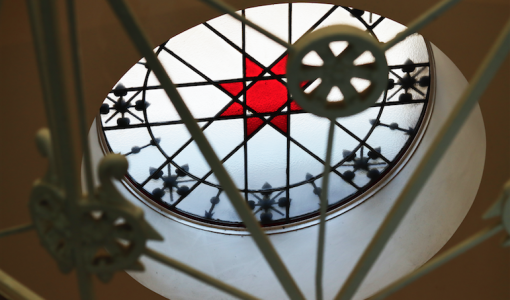
Ana Mendieta
Home
›
Exhibitions
›
Ana Mendieta
Ana Mendieta’s premature death and the ephemeral nature of her work have prevented her from being given the recognition she deserves. The author of work that is at once poetic and critical, Mendieta was born to a wealthy family in Havana in 1948. At the age of 12 she and her sister Raquelín were sent to New York and raised in American orphanages.
Her early exile, loss and margination – both as a woman and an Hispanic – were to later mark her artistic production. Never resorting to pamphleteering or autobiographical anecdotes. Mendieta instead became committed to her adoptive culture, using her work to criticize the society around her, articulating her feminist political convictions and eloquently defending minority identities.
She devised her first performances while a university student in Iowa in the second half of the 1970s, at a time when art was becoming less concerned with the objective, interacting more closely with nature and the urban landscape. It was more experimental and permanence was a far less imperative requirement. Working against this backdrop, Mendieta became less interested in aesthetic solutions than in her personal commitment to the materials and process that shaped her work.
From the outset of her career, Ana Mendieta was particularly concerned with the body: it was her subject matter and her obsession. She was especially attracted by the female body, which for her was as much a passive object of violence, eroticism and death as the instrument and material for producing art. Accordingly, her own body became the center of her performances, actions based on the idea of the female body as a victim of crime and violation but also as a sacred place. In this sense, Ana Mendieta’s performances were true rites of purification where blood with its connotations of magic and its clear allusions to sacrifice, played a disturbingly important role. In Death of a Chicken (Iowa, 1972), the artist, completely nude, decapitated a chicken, letting its blood flow over her pubis. Mendieta’s fascination with the Afro-Cuban legends and religious rites that were part of her earliest years are reflected in this facet of her work. In contrast, Rape Scene is a careful re-staging of a rape and crime.
Mendieta’s later performances took a different direction, expressed in a series of works known as Siluetas. Here, her working environment was Nature, and she ceased to be a tangible object in her art. From then on she became less interested in her body than in its imprint. She embarked on a period of intense involvement with the four basic elements of the material universe: earth, fire, air and water. In Siluetas, she experimented with the dialectic of presence-absence: the imprint of a body; outlines of bodies traced in ashes, candles, flowers, snow, earth in constant allusion to the links between death and resurrection. Mendieta’s Siluetas signal her return to the earth. They are metaphors for a retreat to the womb (the mother who remained in Cuba), an entombment (death), life blossoming anew (the silhouette of a body drawn in flowers) and, in the final instance, freedom.
The Ana Mendieta retrospective presented by the Fundació Antoni Tàpies largely consists of films and still photographs taken by the artist to illustrate and document her work. In addition, three of her installations, or Siluetas, have been re-created: Burial of Ñañigo (New York, 1976) and two untitled works originally produced in Iowa in 1977 and 1978. The exhibition also includes sculptures and drawings produced between 1981 and 1985, the year of Ana Mendieta’s death.
Dates
22.01.1997 – 30.03.1997
Curator
Gloria Moure.
Artist
Ana Mendieta.
Organised by
Centro Galego de Arte Contemporánea, Santiago de Compostela in association with Fundació Antoni Tàpies, Barcelona.
Touring
23/7/1996 – 13/10/1996, Centro Galego de Arte Contemporánea, Santiago de Compostela.
31/10/1996 – 29/12/1996, Kunsthalle Düsseldorf, Düsseldorf.
22/1/1997 – 30/3/1997, Fundació Antoni Tàpies, Barcelona.
12/6/1997 – 12/8/1997, Miami Art Museum of Dade County, Miami.
8/11/1997, The Museum of Contemporary Art, Los Angeles.














